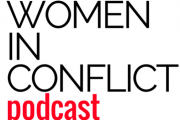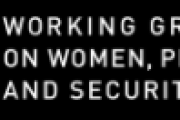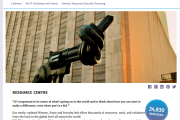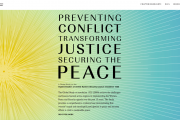Women in Peacebuilding
The Women, Peace and Security Agenda is guided by a set of eight Security Council resolutions that provide direction to efforts promoting gender equality and strengthening women's participation, protection, and rights in conflict prevention to post-conflict reconstruction contexts. These include landmark resolution 1325 (2000) and subsequent resolutions 1820 (2008); 1888 (2009); 1889 (2009); 1960 (2010); 2106 (2013); 2122 (2013); and 2242 (2015). Collectively, these resolutions stress the importance of women's equal participation and full involvement in all efforts for the maintenance and promotion of peace and security, the prevention of conflicts, the incorporation of gender perspectives in all areas of peace-building, and adequate protection, notably from sexual violence in conflict.
Gender equality and women's empowerment lie at the heart of the 2030 Agenda for Sustainable Development, which set an ambitious universal plan of action to achieve the Sustainable Development Goals (SDGs), with a central pledge to leave no one behind. It recognizes that realizing gender equality is a matter of human rights and is crucial to progress across all the goals and targets. As such, progress towards the SDGs will not be achieved if women are denied access towards decision-making and agency in peacebuilding.
The achievement of full gender equality is one of the most important, though less acknowledged prerequisites of peace. Only when women are acknowledged as full partners, with equal rights, in all fields of human endeavor, can an enabling environment for an enduring peace be created.
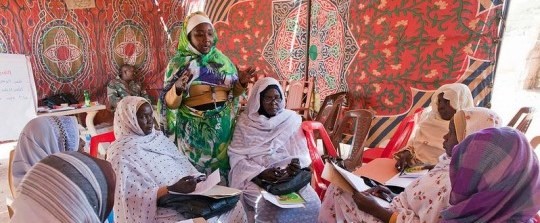
Photo: Sojoud Elgarrai/UNAMID
Women in Peacebuilding
Women have always participated in peace processes and peacebuilding, but often at the informal level and rarely visible to the formal peacemakers. The participation of women is however key to the success and sustainability of peace processes and peacebuilding efforts. An analysis of 181 peace agreements signed between 1989 and 2011 reveals that peace processes in which women acted as witnesses, signatories, mediators and/or negotiators demonstrated a 20 per cent increase in the probability of a peace agreement lasting at least two years (Stone 2014). This percentage increases over time, with a 35 per cent increase in the probability of a peace agreement lasting 15 years.
Although it is imperative to increase women's participation in peace processes, it has proven difficult to increase the number of women as at the peace negotiating table and ensure a gender perspective into a peace agreement. This is often the case because women's absence from the peace table reflects their restricted access to decision making positions in the pre-conflict and conflict phase. Subsequently, it is important to understand that advocacy for women's human rights should not have a singular focus on the participation of women at the peace table. It should also lobby on setting up alternative inclusion mechanisms and including a critical gender perspective into items on the agenda of the peace process, such as DDR, land rights, justice issues, employment opportunities, and community reintegration.
Women's inclusion in political processes
Women's involvement in informal and formal political processes, and access to decision-making is an essential component of peacebuilding efforts that increases sustainability. Countries with increased women's participation and leadership in politics and civil society tend to be more inclusive, responsive, egalitarian and democratic (Markham 2013; Rosenthal 2001; UNDP 2014, 2016a; UNRISD 2005). For example, a study of 39 countries found that a higher presence of women in legislature is correlated with higher perceptions of government legitimacy among men and women (Schwindt-Bayer and Mishler 2005). Another cross-country analysis found that when at least one-quarter of members of parliament are women, laws that discriminate against women are more likely to be repealed (Hallward-Driemeier et al. 2013). The participation of women in political processes is integral to building strong communities and shaping policymaking in ways that better reflects their needs, as well as those of their children, families and communities (Dahlerup 1986; Jones 2005; Schwindt-Bayer 2006).
National Action Plans
National Action Plans for UNSCRs 1325 & 1820 (NAPs) are key entry points for gender-responsive peacebuilding, particularly at country level and can leverage important sub-regional and regional leadership and networks to inform overall strategy and define programmatic activities. The operationalization of the NAPs remains a challenge in terms of tracking gender, conflict, and peacebuilding dynamics and linking them better to post-conflict financing and planning processes. It is important to learn and scale up from instances where deliberate planning efforts have been made, and to actively link the NAPs to post-conflict financing. More here.
Furthermore, better documentation of good practices and operational learning is needed in terms of what works and what does not and how feasible is it to replicate or upscale such efforts.

